As a software development company, we hear about a lot of new ideas every day. and turning these ideas into working products is what we do. In fact, every man-made thing around you was once an idea – from the light bulb in your night lamp to the phone in your hand. Whether it is a physical object or an intangible one, such as an insurance policy or a software application installed in your phone, every product was once a mere idea inside the mind of the founder, an idea that they thought of after identifying a need, a gap, or a problem that needed to be solved. And it is these ideas that were translated and developed into actual products that are being used by people today. A minimum viable product (MVP) is something that is crucial for the transformation of ideas into successful end-products.
A good idea and an eventually successful product is one that caters to a need in the market, addresses a market gap, or offers a better alternative to other competitor products in the market. You can never really know if an idea is good or not until you actually test it out in the real world, and developing a minimum viable product allows you to do that.
This article covers all that you need to know about what a Minimum Viable Product is and the process of minimum viable product development. In this article we will delve deep into the following:
- What does MVP mean?
- The concept of “Minimality” and “Viability”
- Basic Characteristics of a Minimum Viable Product
- Benefits of Minimum Viable Products
- The Process of Minimum Viable Product Development
- Cost of Minimum Viable Product Development
- Popular minimum viable product examples
Let’s begin by unpacking ‘what does MVP stand for’.
What does MVP mean?
A Minimum Viable Product is a concept of Lean Product Development that is based on the concept of ‘minimality’ and ‘viability’. It is a scaled-back version of a new product that is built with the minimum number of features required to develop a functional and viable product. A minimal viable product is developed to be offered to the potential customers to gauge their response to the product idea before investing in launching a full-scale product.
The key premise behind developing a minimum viable product is to build a product version with:
- Sufficient Features – focusing only on the features that are essential to the viability of the product.
- Minimum Time And Effort – developing a full-scale product can be a time-consuming and expensive process that can sometimes take 8 to12 months to develop, while a minimum viable product can be built and launched within 2 to 3 months.
And a minimum viable product aims to:
- Reduce The Time To Market – the product idea can be swiftly transformed into a workable product that can be released to the market at the earliest.
- Provide Maximum Validated Learning – an MVP allows you to learn about your customers’ response to your product, their interests, and preferences, without fully developing the product.
- Direct Further Product Development – you can gather market feedback that can be applied while developing the full-scale product in the future.
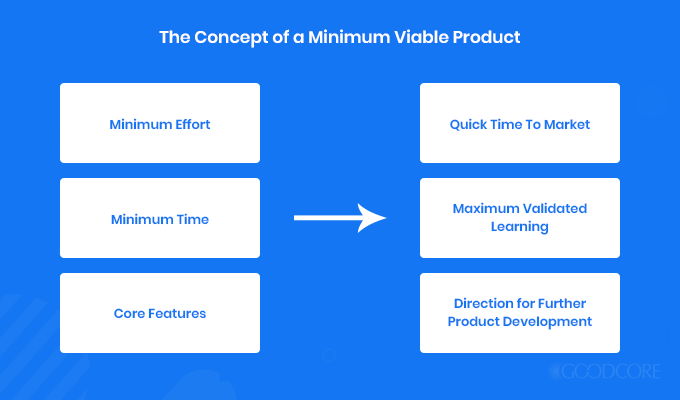
Summing up what MVP stands for and the idea behind it in simple terms:
A minimum viable product is a version of a new product that is built with the least amount of development effort to gather the maximum amount of customer feedback.
The Three Basic Characteristics of a Minimum Viable Product
- Sufficient value: A minimum viable product must offer enough value to the customers that make them willing to use or buy your product initially.
- Future benefit: A minimum viable product must have the ability to retain initial customers or early adopters by depicting enough future benefit, such that the early customers keep using the product in future as well.
- Feedback for future development: A minimum viable product must provide a feedback loop to direct the future development of the product.
Have a product idea?
GoodCore is a development company experienced in transforming ideas into successful minimum viable product software.
Contact Us
Example of a Minimum Viable Product
Minimum Viable Product is not a thing in itself – it is only a concept that can be applied to different kinds of products. Hence, the MVPs for different products can vary greatly, depending on the nature of each product itself. Let’s consider some minimum viable product examples to understand this concept better.
For instance, imagine your new product idea is a battery-powered clock and you want to develop a minimum viable product for it. The MVP would be based on the essential functions of the clock – meaning that the MVP would include only those features that are essential for the clock to perform its intended function (i.e. indicating time). The essential features, in this case, would include a motorised clock mechanism, batteries, a dial, and 3 hands to indicate hours, minutes, and seconds. These are the minimum number of features required to build a workable version of a clock.
The ‘minimum’ in MVP does not imply the “least” amount of features. Instead, it stands for a “sufficient” amount of features. In this case, the clock’s MVP would not be sufficient if one of these features was removed. For example, a clock with only one hand is an incomplete and inviable product. Similarly, a clock with no dial to indicate time defeats the intended purpose of the clock.
Once the clock’s MVP is developed, it can be launched to the customers to gather their response to the product. Through this feedback, you can learn firsthand how this clock was received by the customers and use it to guide the development of the final product. This way you can identify the trends in the market and the preferences of your customers, and deliver a final product that perfectly meets their demand. For instance, if customers prefer a larger clock to be hung on the wall, the final product can be a wall clock. If they prefer a smaller, handy clock that can be carried around, the same minimum viable product can be developed into a pocket watch or a wristwatch.
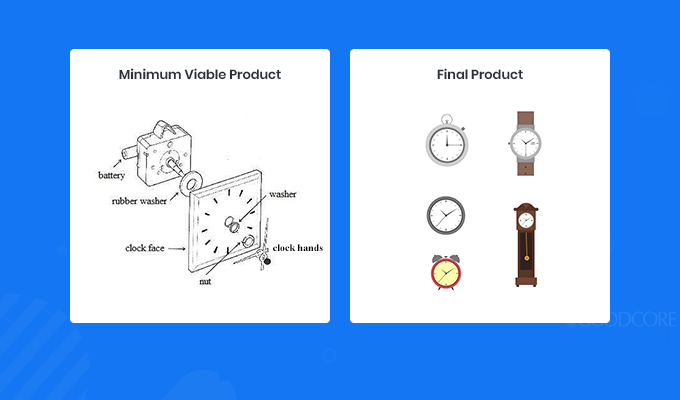
The final product can take the shape of a wall clock, a pocket watch, an alarm clock, a standing pendulum clock or a wristwatch, but they all will be built on the foundation of the minimal viable product. Just like the example of clocks, the minimum viable product software works in the same manner.
MVP Benefits – How Can a Minimum Viable Product Help Your Final Product
Ever since the concept of the minimum viable product came about, it has changed the face of new product development by not only making the process lean and efficient, but also by encouraging more businesses, startups, and individuals to come forth with their innovative ideas. Whether it is a startup investing in a new product idea to launch in the market or an already established business looking to add new products to their existing product portfolio, investing in the development of a minimum viable product can be key to your product’s success.
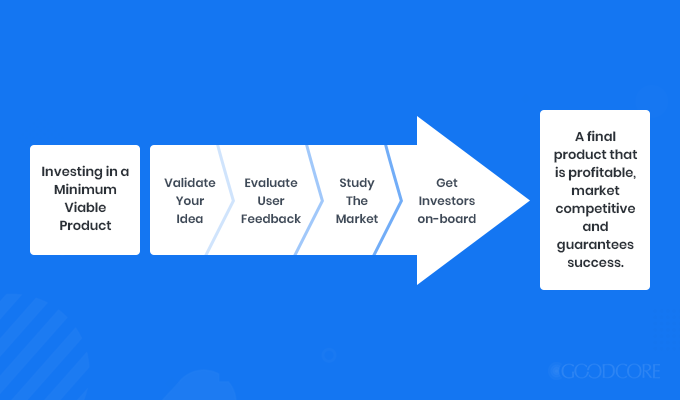
A minimum viable product can help the final product in a number of ways. Here’s how an MVP can result in a final product that is profitable, market-competitive and successful.
Validation of the Product Idea
Not every product idea is a good product idea. Oftentimes, ideas make perfect sense in theory but turn out to be completely opposite in practicality. An MVP allows you to determine the potential of your product idea. The process of releasing a minimum viable product offers maximum validated learning from the customers; without spending a lot of time and money, the product owner can determine whether their product is something that the customers would be interested in. If the MVP performance is not favourable, the product owner can save their investment from going to waste by not pursuing that idea further or by changing it to meet the demands of the customer.
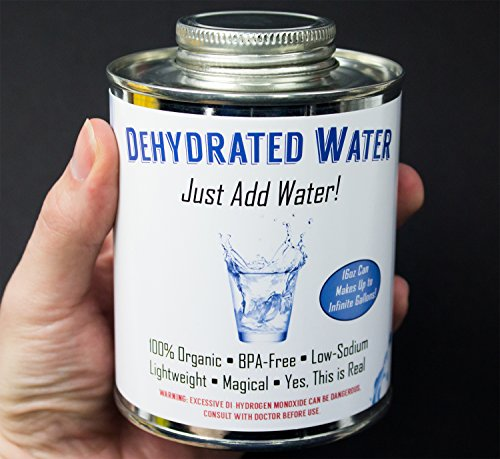
Idea validation is especially well suited for products that are laborious and expensive to create, such as software products. With software ideas, developing an MVP helps product owners map their product vision, acquire proof of concept (POC) and find out whether their product is technically feasible.
Study the Market
Another great MVP benefit is that it helps you study the performance of your product in the market. Testing the market potential of your product reduces the chances of failure and familiarises you with the particularities of your target market. You can also find out the dominant market trends and gaps within the market that you can take advantage of when developing the full version of your product.
Gather and Evaluate User Feedback
Deliver to your customers what they really want. Gather feedback from your users’ responses to your product. It is a more effective way of gathering customer feedback than customer surveys and/or focus groups. That’s because, with an MVP, you can collect the response of your customers first-hand. You can learn if your product is something that the customers need, what they like or dislike about the product, and what else they prefer. When it comes to software, MVP software can help evaluate how the intended users of the software interact with it.
Get Investors On-Board
If your project requires investment from third-party or angel investors, a successful minimum viable product can prove the workability of your product idea to your potential investors. With a clickable, interactive, and functional MVP software product, you are more likely to convince the investors to fund your project.
For early-stage startups that lack funding, a minimum viable product is the most efficient way to pitch their product idea to investors and prove the worth of their ideas.
Are you a startup looking for an MVP development company?
GoodCore has developed MVPs for all sorts of projects, websites, and applications, for startups and mature businesses. If you have a software product idea that you want to develop an MVP for, reach out to us!
Contact Us
Save Time and Resources
One of the most important benefits of MVP is that it provides feedback early on so that businesses can save their time and financial resources by making sure that they are investing in a product that is likely to succeed. If a product idea receives a favourable reaction from the market, customers, and/or investors at the MVP stage, it becomes easier for businesses to scale up the MVP and launch a full-scale product.
The Process of Minimum Viable Product Development
How is a minimum viable product developed? How long does it take? These are some of the most commonly asked questions. There are no set rules for the development process that tell exactly what steps are performed or exactly how much time it takes for minimum viable product development. It can differ from product to product depending on the nature, requirements, and scope of the product idea. If you have a product idea and you’re seeking the answers to these questions, here’s what you need to know:
Some standard steps of development will have to take place to transform your ideas into a workable MVP that is ready to be launched into the market/customers. These steps would depend upon your requirements, as well as the practices of the software development company you choose to partner with.
Being in the MVP development game for more than 15 years, we have perfected the process of developing a minimum viable product with a quick turnaround time and within budgetary limits. Here’s how we develop MVPs at GoodCore:
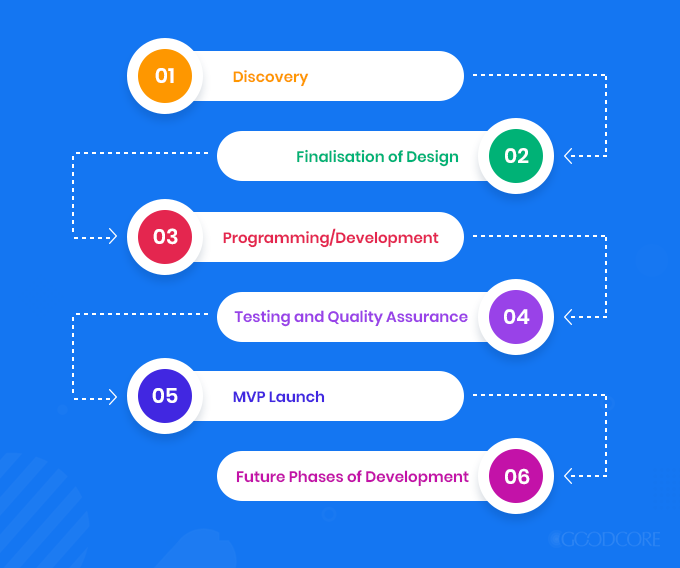
Step 1: Discovery
A good software development company will always begin with being on the same page with you about your product idea. This means fully understanding the product’s technical requirements, its intended users, the market in which it will be launched, and the competitor products. This gives the software partner a clear idea about which features of the products need to be prioritised for the MVP phase and what features and functionalities can be incorporated in the future phases of development.
Step 2: Finalisation of Design
Once you put your idea into documentation and define what your product actually does in the discovery phase, next comes the part where it is decided what the minimum viable product will look like. With a clear idea of what features will be included in the minimum viable product, the design and navigation of the product are finalised. This is a crucial step to visualise the idea through mockups and prototypes.
Step 3: Development
This is the step where your idea is taken through a streamlined process of software development. Here, your software team would program your MVP software product to your exact technical and design specifications. The duration of the development process would depend on your engagement model and terms with the development team. At the end of this stage, your minimum viable product would be built to be tested for quality and launch in the stages that follow.
Step 4: Testing and Quality Assurance
It is essential to test the minimum viable product for performance and quality before launching to the early adopters. Launching an MVP with bugs and defects would render the concept of a minimum viable product pointless. Therefore, this step is dedicated to thoroughly testing your MVP and readying it for launch.
Step 5: MVP Launch
Where a full-scale product takes many months to be developed, an MVP can be ready to launch in a matter of a few weeks or months. This is the stage where your product is deployed and becomes ready to be used and tested by the customers, and the process of feedback kickstarts.
Step 6: Future Phases of Development
The feedback you gather from your minimum viable product can be used to guide the future phases of product development. Use the validated learning to evolve your minimum viable product into a full-scale product.
You can choose to work with the software partner to further develop and scale your product by adding more features and functionalities, or hire a different team of developers for the task. You can also choose a phased development approach to scale up your minimum viable product, where you can develop a full-scale product iteratively over multiple phases, adding new features and functionalities in each development phase.
Often, businesses choose a phased approach because it allows them to evaluate valuable customer feedback at every iteration so they can continue delivering what the customers want. This way they can prioritise features for each phase while having the flexibility to change priorities according to the changing market trends.
Real-Life Minimum Viable Product Examples
Here are some of the most famous examples of products that were built on the foundation of successful minimum viable products.
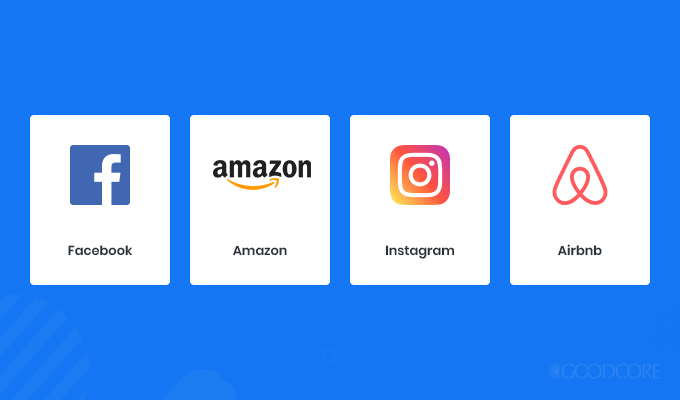
Facebook is the epitome of success – a global brand that almost everyone is familiar with and one of the best minimum viable product examples. Facebook (previously known as, Thefacebook) started when the founders had an idea to create a social platform for Harvard students. Thefacebook was a successful MVP due to its popularity amongst the students at Harvard. It proved the market potential of the idea and encouraged Zuckerburg to extend it to other universities and, eventually, to the world.
Like Facebook, Instagram as we know it today also started with a basic minimum viable product called Burbn. Initially, the Burbn was a location-based application where users could check in from different locations. It was a complicated software with a number of different features including photo-sharing. With this MVP, founder Kevin Systrom learned that users weren’t as interested in other features of the app as they were in photo-sharing. Using this feedback, Systrom decided to focus on this feature only and developed Instagram.
Over the years, Instagram has used customer feedback to evolve its minimum viable product software application by including features like photo filters, videos, hashtags, and many more.
Amazon
Amazon, the largest retail outlet in the world, is the perfect example of a successful business that emerged out of a well-planned minimum viable product. Jeff Bezos started Amazon in 1990 with a simple website. He began with making a list of products that could be sold online at the time, which consisted of only 5 categories including books, CDs, videos, computer hardware, and software.
Bezos started Amazon as an online bookstore that bought books from the distributors and shipped them to customers. Over the years, he thoroughly planned and scaled the MVP to sell products across different categories. Eventually, Amazon became “The Everything Store,” selling millions of products belonging to every possible product category.
Airbnb
Joe Gebbia and Brian Chesky started AirBed&Breakfast after they struggled to pay rent for their loft apartment in San Francisco. They came up with the idea for Airbnb to earn money by providing accommodation to people visiting the town. Their MVP was a very simple website where they uploaded a few photos of their place and successfully got three paying guests. With this success, Airbnb grew exponentially to become a billion-dollar business.
Wrapping Up!
A minimum viable product is one of the best practices of lean product development that focuses on developing products based on validated learning from the customers. For any product idea, the MVP is a product version that is launched prior to the full-scale product to reduce the time-to-market, test the market potential of the idea, and monitor the response of the customers. It is built on the concept of ‘minimality’ and ‘viability.’ Therefore, an MVP only focuses on the features that are essential for the functionality of the product.
The aim of a minimum viable product is to build a product with the least amount of development effort and expense to gather the maximum amount of customer feedback. Once an MVP is developed and launched, it provides a loop of feedback that can be used to direct the future development of the product.
To wrap up our discussion on MVP, we have answered some of the frequently asked questions about MVP product development.
FAQ: How Much Does an MVP Cost?
This is a tricky question to answer because the cost of developing a minimum viable project can vary from product to product. It basically depends on the product idea, the nature of the requirements, and the technical complexity of your product.
Looking for Expert Advice on MVP Costs?
We have 15+ years of experience in the development and deployment of successful MVPs for startups and small and mature businesses across industries. Consult us for precise cost estimates for your product ideas.
Write to us
FAQ: Are MVPs only for startups?
Although it is commonly believed that the MVP technique is only suited for startups that aim to launch products in the market, it is not only limited to that. MVPs are equally beneficial for established businesses, especially those that plan to add more products to their existing product portfolio or develop new features for their current products.





